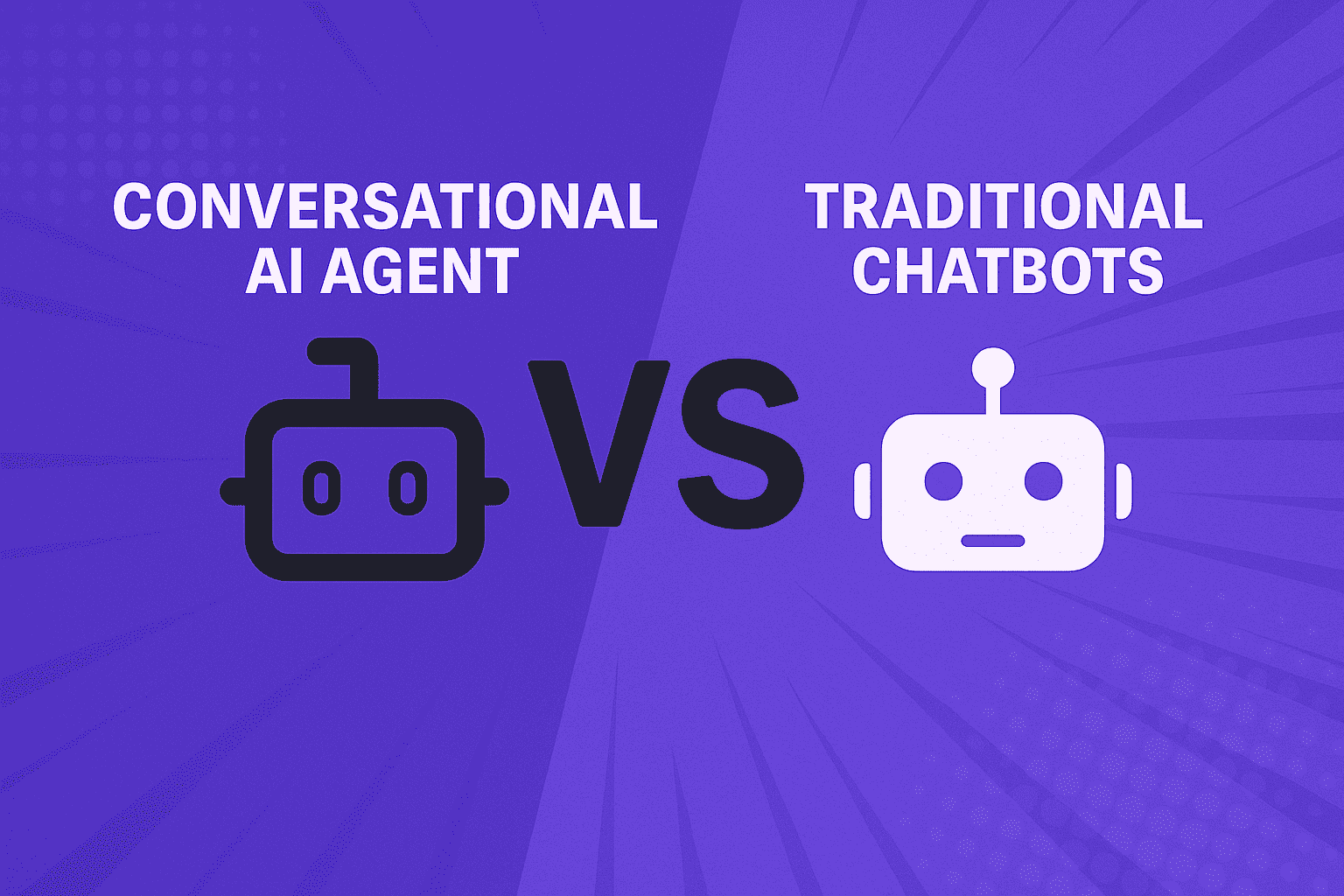Conversational AI Agent vs. Traditional Chatbots: What’s the Difference?

In a digital landscape rapidly evolving with automation and artificial intelligence, businesses are rethinking how they interact with users. At the forefront of this transformation are two common technologies: conversational AI agents and traditional chatbots. While they might seem similar at first glance, their capabilities and the value they deliver are worlds apart.
This post will break down the core distinctions, helping you understand which technology best suits your business needs.
What is a Traditional Chatbot?
Traditional chatbots are rule-based systems designed to follow predefined scripts. Think of them as flowcharts with buttons. They are programmed to respond to specific keywords or commands and usually struggle when users deviate from expected inputs.
Pros:
- Simple to build and deploy
- Great for basic FAQs and linear workflows
- Cost-effective for limited use cases
Cons:
- Poor handling of unexpected questions
- No ability to learn or improve over time
- Lacks contextual understanding
IBM’s explanation of chatbots offers a solid technical overview.
What is a Conversational AI Agent?
Conversational AI agents, on the other hand, use natural language processing (NLP), machine learning, and data integration to simulate human-like interactions. Unlike traditional bots, they understand intent, manage multi-turn conversations, and adapt based on past interactions.
Pros:
- Understands context and intent
- Learns and evolves over time
- Handles complex queries and dynamic conversations
- Integrates with various systems (CRMs, databases, APIs)
- Now easy and cost-effective to build using platforms like YooBot
Cons:
- Traditionally more complex to set up
- Historically higher initial investment, though this is rapidly changing
Conversational AI is a core technology that powers sophisticated virtual assistants and intelligent agents, enabling natural, human-like interactions between users and machines.
Key Differences at a Glance
| Feature | Traditional Chatbot | Conversational AI Agent |
|---|---|---|
| Tech Base | Rule-based | AI/NLP-based |
| Learning Capability | None | Machine Learning |
| User Interaction | Scripted | Natural and Adaptive |
| Context Awareness | No | Yes |
| Integration Complexity | Low | High |
| Use Case Complexity | Simple | Complex |
Which One Should You Choose?
Your choice depends on your business goals. If you need a quick solution for handling repetitive tasks like answering hours of operation or booking appointments, a traditional chatbot might suffice.
But if your organization prioritizes personalized customer experiences, needs to integrate across tools, and aims to scale automation, a conversational AI agent is the smarter long-term investment.
Thanks to AI agent builder platforms like YooBot, creating a conversational AI agent is now simple, fast, and cost-effective. Users can design intelligent, integrated agents without coding, just by subscribing to the platform.
Explore YooBot’s capabilities and see how you can bring your automations to life.
Conclusion
As user expectations grow, so too must your technology stack. Traditional chatbots have their place in straightforward scenarios, but conversational AI agents offer the intelligence, adaptability, and efficiency modern businesses need.
The difference isn’t just technical, it’s transformational.